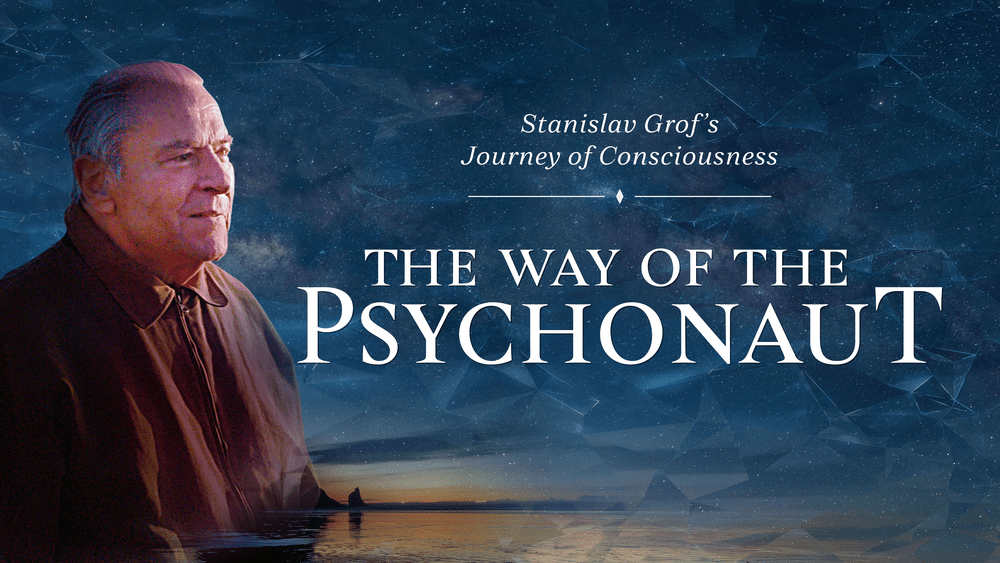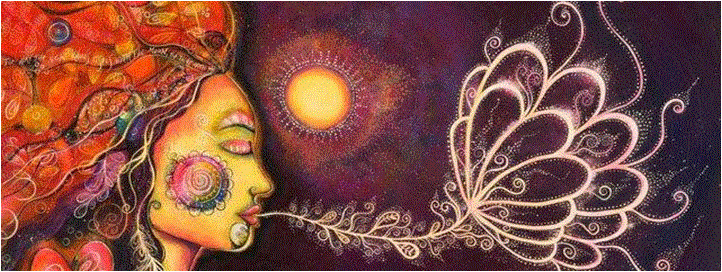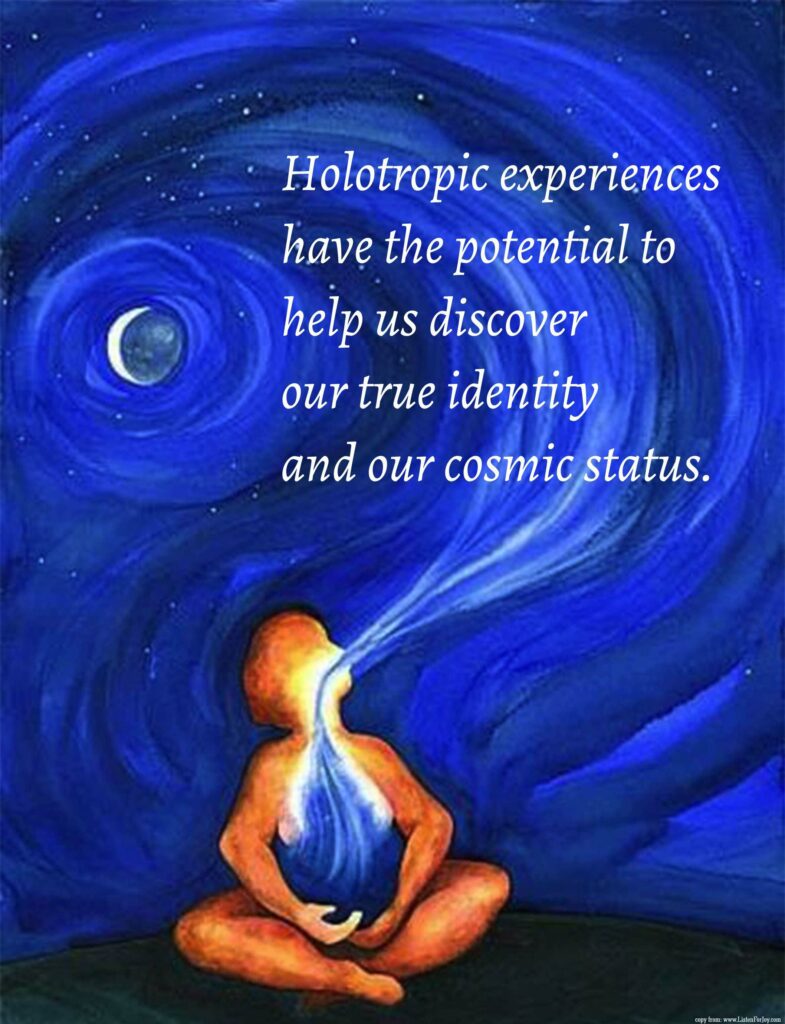Have you ever thought about what it might be like to experience an altered state of consciousness by taking a hallucinogenic drug?
One day in 1943 pharmaceutical researcher, Albert Hoffmann, M.D., was investigating combining a flowering plant called squill and a fungus to create a respiratory and circulatory stimulant when he accidentally absorbed a small amount of the drug and discovered its powerful effects. He had just discovered LSD (lysergic acid diethylamide). Hoffmann describes his experience below.
“I lay down and sank into a not unpleasant intoxicated condition, characterized by an extremely stimulated imagination. With eyes closed in a dreamlike state because I found the daylight to be unpleasantly glaring, I perceived an uninterrupted stream of fantastic pictures, extraordinary shapes with an intense, kaleidoscopic play of colors. After about two hours, this condition faded away.”
Dr. Stanislav Grof, psychiatrist and author of The Way of the Psychonaut, continued Hofmann’s research on LSD throughout the 1960s. Grof was searching for evidence of the psychotherapeutic benefits and other healing modalities of LSD in the 1960s. He supervised or guided about 4,500 therapeutic LSD sessions.

“I realized people were not having LSD experiences; they were having experiences of themselves. But they were coming from depths that psychoanalysis didn’t know anything about. Psychedelic experiences mediate access to deep realms of the psyche that have not yet been discovered and acknowledged by mainstream psychology and psychiatry. They also reveal new possibilities and mechanisms of therapeutic change and personality transformation.” — Stanislav Grof
This treatment was coined by Grof; “psychedelic therapy.” It established the new field of transpersonal psychology integrating the spiritual and transcendent aspects of the human experience. Grof’s psychedelic therapy assisted his patients in achieving an altered state of consciousness.
Grof published impressive results for LSD’s healing effectiveness in psychotherapy. He also presented evidence that LSD effectively helped people stop drinking alcohol. A few months later, LSD was banned. Nevada and California banned it in 1966, followed by most other U.S. states, eventually becoming a U.S. federal law. Then gradually, the rest of the world followed.
Holotropic Breathwork a New Approach to Self Exploration and Therapy
Grof soon discovered a replacement for LSD. It was a breathing technique that replicated the effects of LSD. He called it holotropic breathing. Holotropic means “moving toward wholeness,” from the Greek holos (whole) and trope (moving toward.)
How to do Holotropic Breathwork

Find a quiet, safe place to lie down and play some evocative music. You may want to have a sitter next to you. There are certified holotropic sitters that can assist you. Grof says it is best to commit several hours to this. By breathing quickly and deeply, almost hyperventilating, you enter into a non-ordinary state of consciousness.
You may hallucinate, hear voices, have out-of-body experiences. Some people may relive their prenatal life, birth, infancy, childhood, or past lives. The process accesses an inner healing intelligence. It has transformative potential and quite possibly evolutionary potential.
Holotropic breathing allows you to see yourself with a broader lens and from different angles of perception than the ordinary mind. You may feel a oneness with others, nature, and the Creator. The universe can appear fluid, and things seem non-material. Space and time become relative. It can give you a whole new understanding of the nature of reality. It can elicit euphoria, or it can create a state of psychological crisis.
“The experiences for the initiates is like a journey into the underworld where our ideas and sense of self are subjected to dismemberment, our ideas die, and then they are reborn, and we go through this magical journey.”— Stanislav Grof, M.D.
It can be intense. This is why it is recommended that you have a sitter when you do holotropic breathwork. It can bring up painful memories, helping a person work through and overcome these memories. In many cases, it can lead to a personal transformation.

“What happens in a Holotropic state is that your symptoms will typically get temporarily activated and then you move through them and beyond them…so you connect to something that’s like a self-healing intelligence. It not only identifies the problems, but it starts bringing them automatically to the surface for processing, and you work with the material as it is coming.” —Stanislav Grof, MD.
Benefits of Breathwork

The therapeutic benefits of holotropic breathwork continues to be studied. Several recent scientific studies have validated that holotropic breathing reduces stress, increases alertness, and boosts your immune system. It can help you to self-regulate your physical and mental health. Scientists have also validated that holotropic breathing has a significant benefit in achieving long-term abstinence from alcohol and other substances. For a list of peer-reviewed studies on holotropic breathwork, see below.
“You are not a human being in search of a spiritual experience. You are a spiritual being immersed in a human experience. We are collaborators in creation…It is our duty as men and women to proceed as though the limits of our abilities do not exist. Remain true to yourself but move ever upward toward greater consciousness and greater love! At the summit, you will find yourselves united with all those who, from every direction, have made the same ascent.”—Pierre Teilhard de Chardin, French idealist philosopher, and Jesuit Catholic priest

Peer-Reviewed Journal Articles on Holotropic Breathing
- Measure of Significance of Holotropic Breathwork in the Development of Self-Awareness
- How Breath-Control Can Change Your Life: A Systematic Review on Psycho-Physiological Correlates of Slow Breathing
- A Clinical Report of Holotropic Breathwork in 11,000 Psychiatric Inpatients in a Community Hospital Setting
- Evoked Potentials in Holotropic Breathing
- Holotropic Breathwork: An Experiential Approach to Psychotherapy
- The Effect of Holotropic Breathwork on Personality
- Exploring holotropic breathwork: an empirical evaluation of altered states of awareness and patterns of phenomenological subsystems with reference to transliminality.
- Other Peer-reviewed Journal Articles on Holotropic Breathwork

